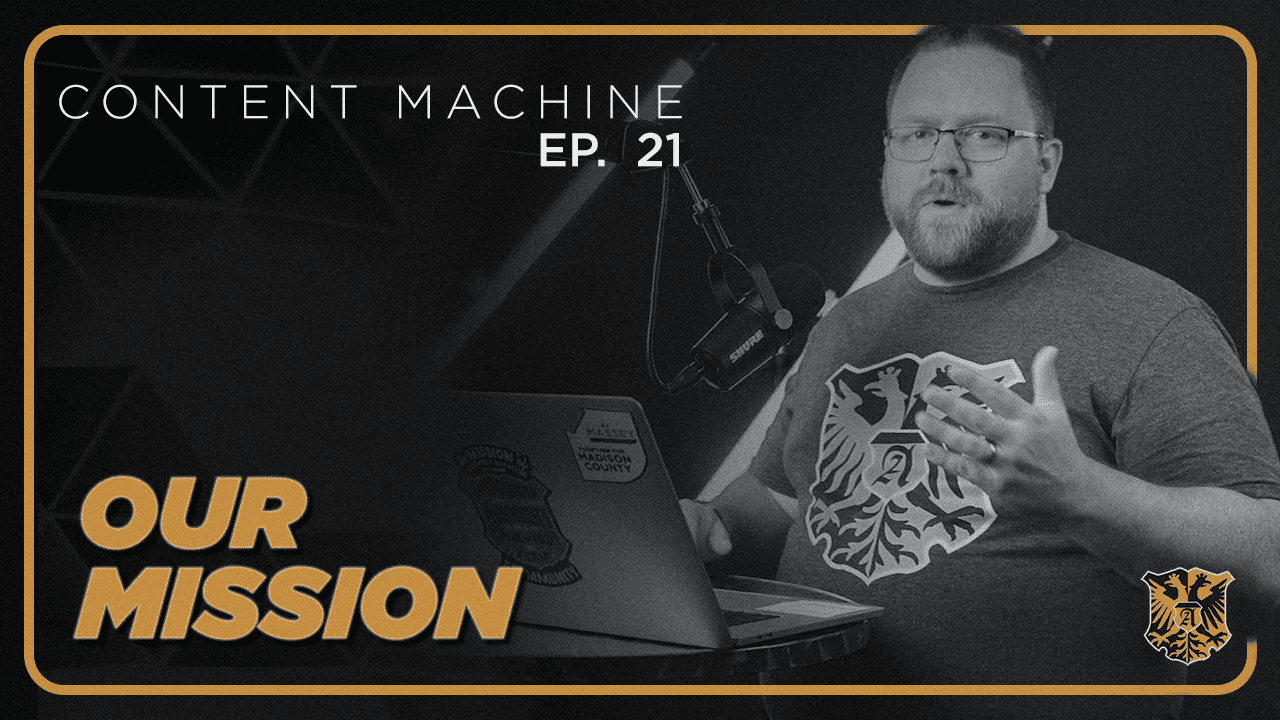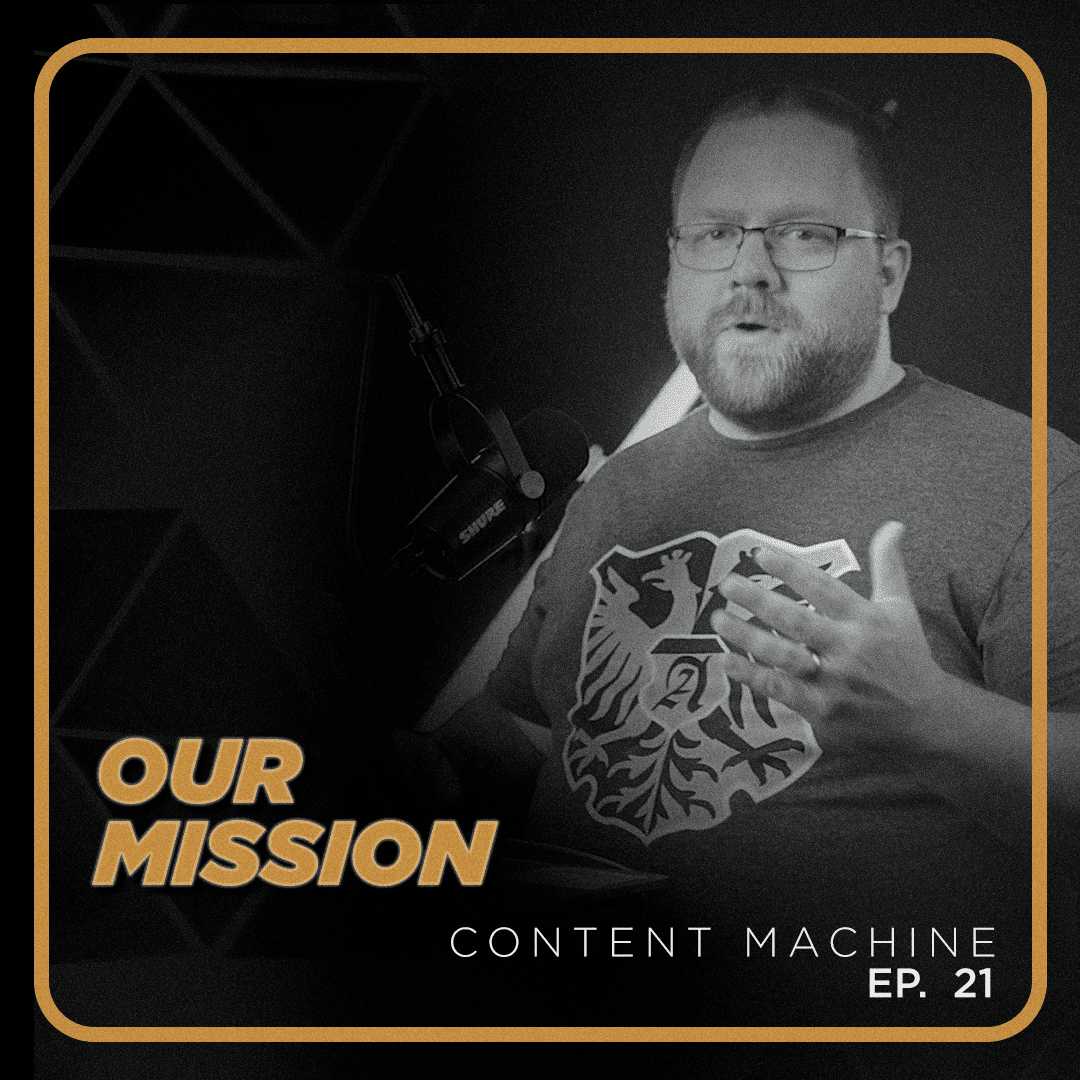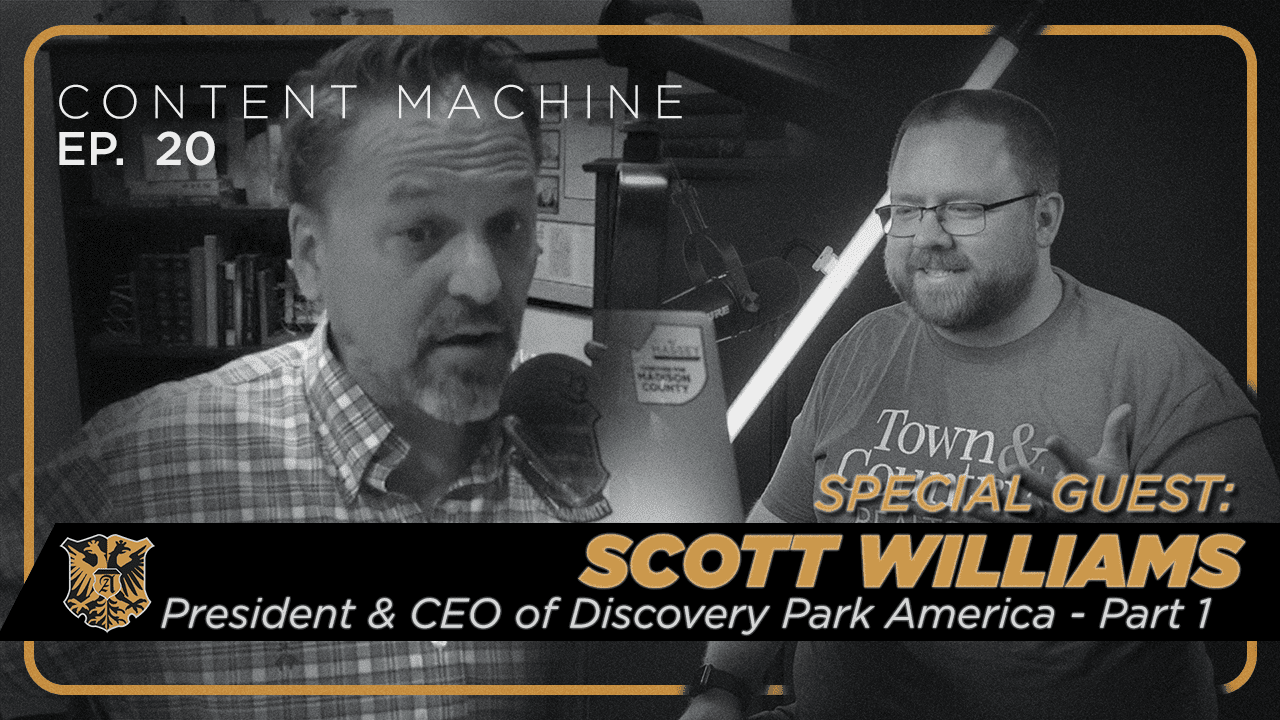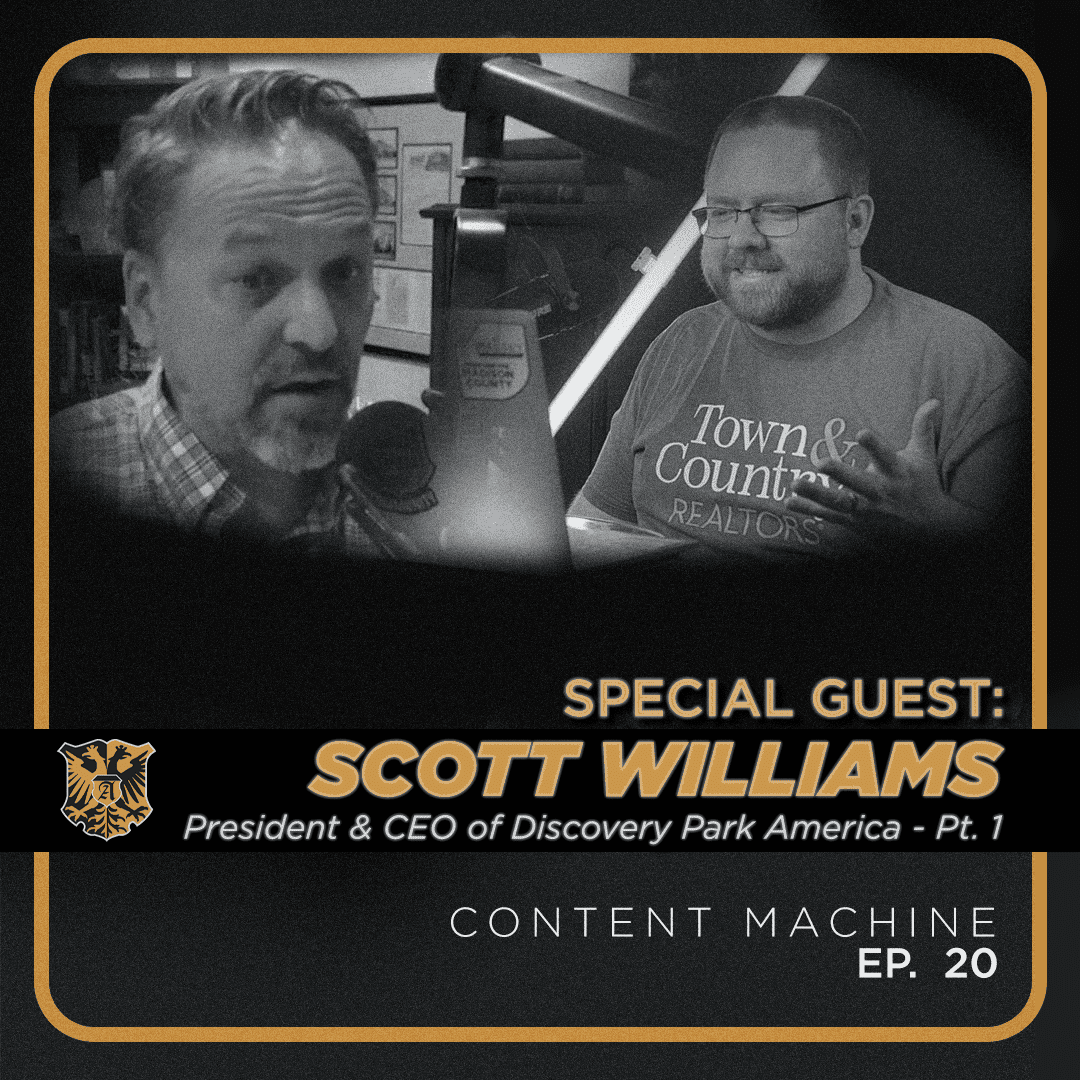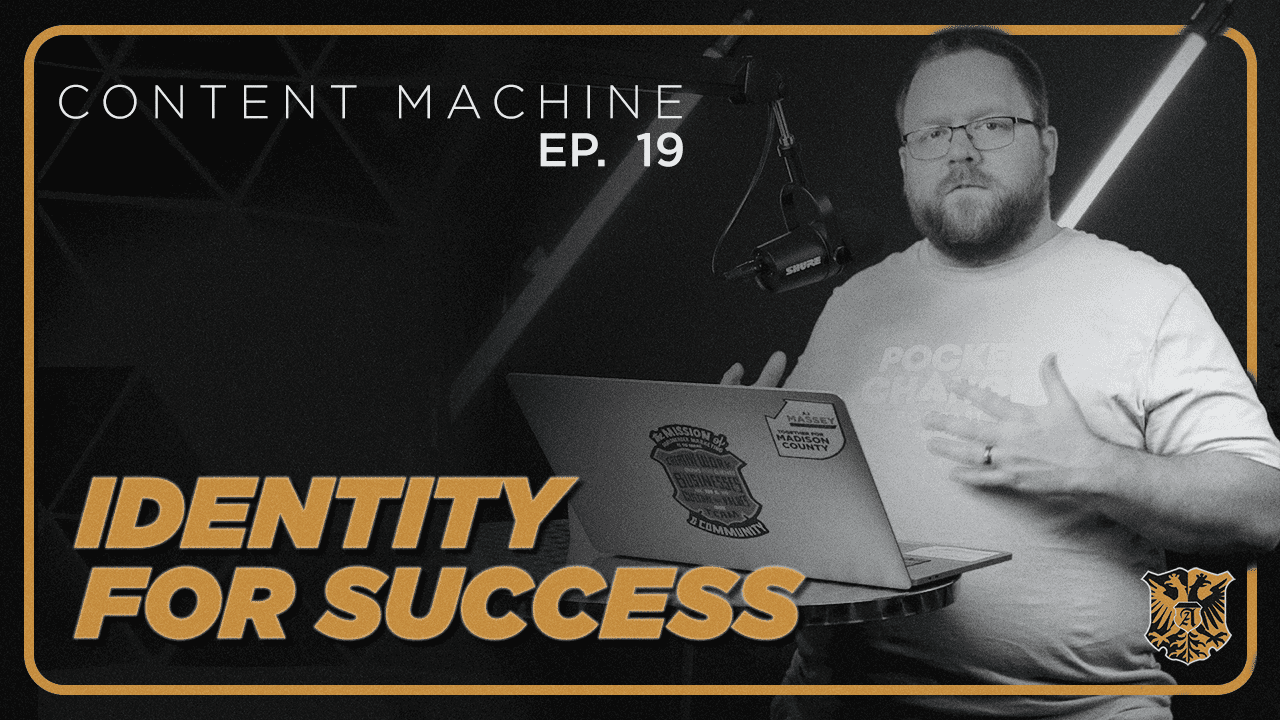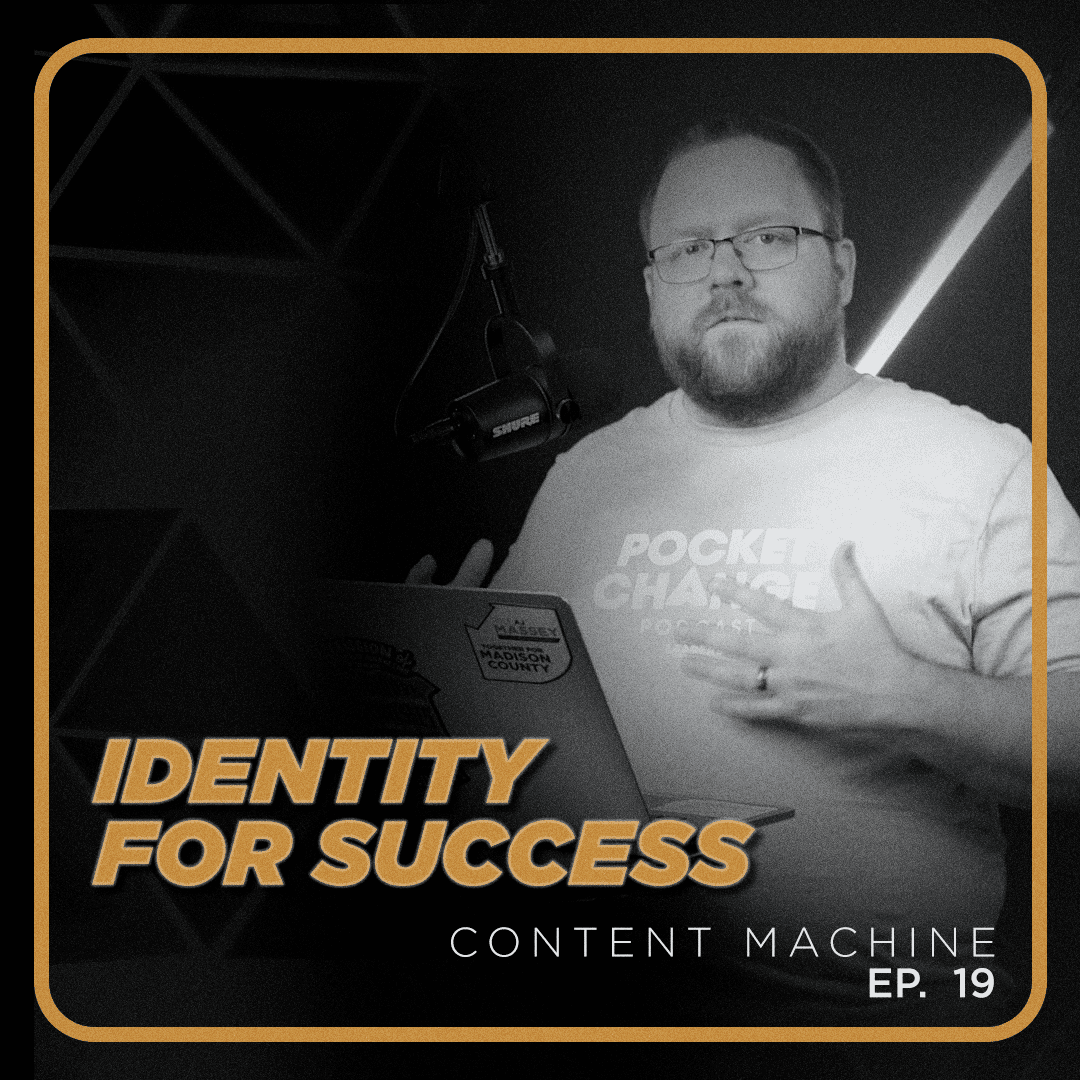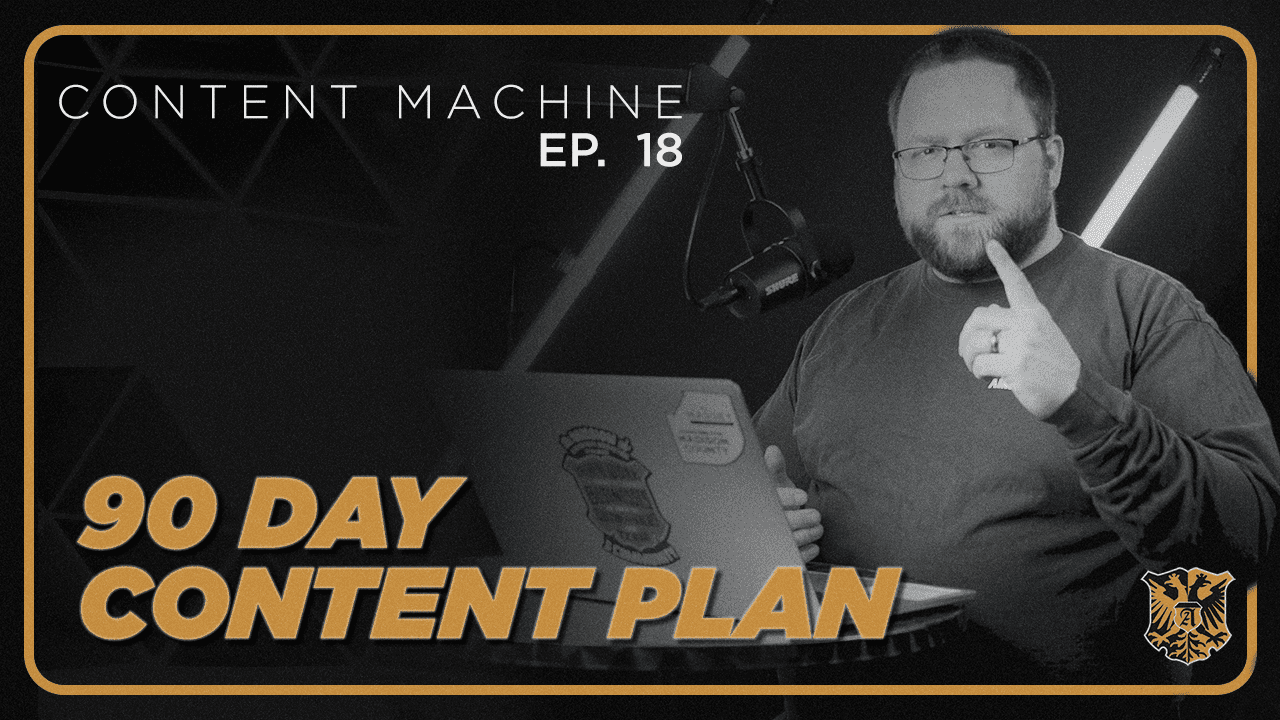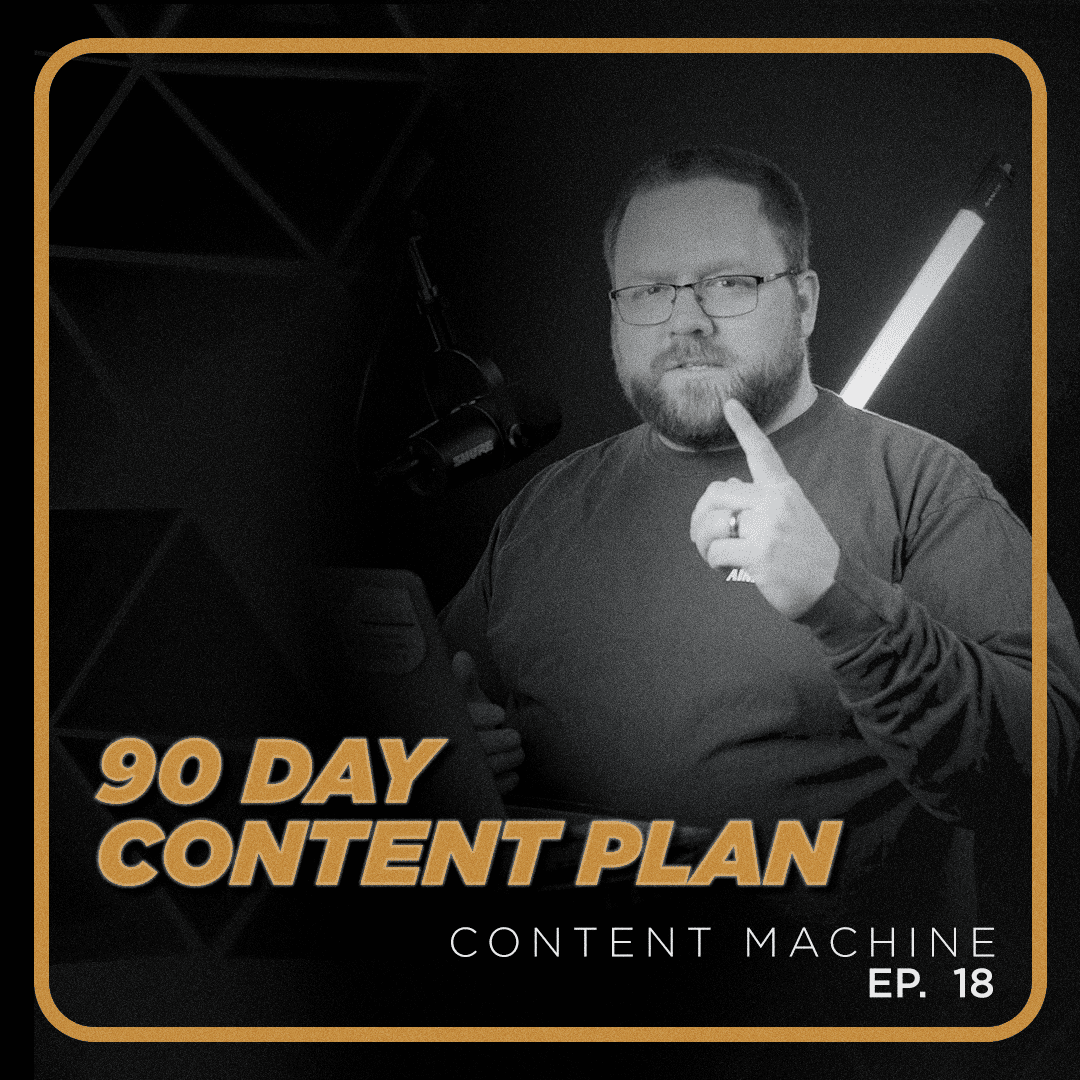Welcome to the Content Machine Podcast. Today, we have part one of a two part interview with Scott Williams from the Discovery Park of America. Our guest today is Scott Williams. He’s the President and CEO of the Discovery Park of America. Scott, thanks for joining us.
Hey, thank you, Kevin. It’s exciting to be on this end of the podcast recording.
Absolutely. I was a guest on Scott’s a few months ago and enjoyed reading one of your books and enjoyed coming to the Museum whenever I get the chance. So why don’t you give us a little overview about you, Scott?
Yeah, sure. So I am, I guess, on my LinkedIn, I think it says I am a museum professional. I see myself as being in the museum business. Although when you work for a museum, you’re also in the tour and travel and destination business. I originally majored in advertising with a concentration in journalism. I’ve got that backwards, journalism with a concentration in advertising from the University of Memphis and then worked for ad agencies and different companies in the in the marketing arena. Landed at Elvis Presley enterprises, where I was first really introduced to both the tour and travel business and running a historic destination. Fell in love with both of those two businesses and the way they intersect and ended up moving to Washington, DC, where I got to apply both of those two skills at the Museum, which was the Museum of the News and the First Amendment in Washington, DC. Got to work with some incredible people and learned a ton. But I never really got over being homesick for West Tennessee, which is where my people are from, as they say. Discovery Park of America’s President, Jim Ruppey, was about to retire and they were looking for somebody to run this incredible place.
One thing led to another, and I got the job and have been here now for five years.
Wow. Okay, so five years. And then you’ve written some books, so I want to give you a chance to plug your books real quick.
Yeah, thank you. Just as a hobby, I love to write. Several years ago when the internet was new and I was trying to learn it just like everybody else was, I saw genealogy research as a way for me to practice writing and practice using the internet and using the new tools that were out there for us as communicators to use. I was one of the first people on Blogger, which was how we blogged back in the day. And so I had a genealogy blog and ended up getting a website. And one thing led to another from that. And I ended up publishing a book about Richard Halliburton, who was an explorer, who was from West Tennessee. He was from the same town my people were from, which is Brownsville. And that led to several other books. And so my most recent book is about David Crockett. So anybody who’s interested about David Crockett can Google Scott Williams and David Crockett on Amazon, and my book will come up to the top. So it’s really added the whole opportunity to be able to self publish and to be able to not have to submit your work and go through a publisher and wait for approval and all that.
To be able to have the ability to publish a book that I think needs to be out there has really added a lot to both my life and career that I would encourage others who are listening, if they’ve got that book inside them, don’t wait for somebody else to do it, they can jump in and do it.
I read the Hal Berton book and it was fascinating and a part of history of Weston City that I have never come across. So that was very cool. Now I noticed I’ve always referred to him as Davy Crockett, but you very intentionally called him David Crockett. What’s the difference there?
Back then in real time, Davy Crockett was really an insult. He went by David Crockett. He was a congressman. And that was a way that people would minimize his opinions. So they would call him Davey as a a childlike reference to his name. But he never went by Davey. He always went by David Crockett. And of course, it was Disney who brought the Davey back up. And I guess Davey had a better ring to it. So it’s Disney’s fault that everybody now knows he’s Davey, Davey Crockett, King of the Wild Frontier.
Yeah. Well, when the mouse says something, everybody listens generally, right? That’s right. All right. So how do you get to be a museum director? Because that seems like there’s a lot of different career trajectories in life, but a lot of people don’t grow up being like, I can’t wait to be a museum director when I’m.
Growing up. Right. And what I found is almost 100 % of the jobs out there, very few people ever wanted to be that when they started out. And everybody’s path is completely different. In the museum world, typically, your executive directors are academics. Usually, they are typically going to be academics in the area that that particular institution represents. So if it’s the whaling Museum, the chances are good that the executive director is going to be a person who has a degree in whaling biology and has a PhD. In an art museum, it’s going to be somebody who has an art history, Masters, and then a PhD. So it’s usually very academic. My path was a little bit different in that, as I mentioned, I started off in marketing and PR and sales. My focus is usually everywhere I’ve worked, trying to get people to do what we need them to do, and that is to visit our institutions. So whether it’s Graceland or the Museum or Discovery Park, I have an emphasis on trying to get people here and trying to get people through the door because we can’t implement our mission unless we get people through the door.
So that usually takes up a lot of my day is implementing things that does that. So I think everybody’s career path is going to be a little bit different. And that’s what intrigued me about Discovery Park is if I wanted to work in a museum, the chances are because I don’t have an academic background in a particular area, I knew I was going to have to go to a museum that was unique. Now, the thing about Discovery Park that makes it so unique, and for people who’ve been here, they will understand this, but for people who are just hearing about it, when you work in the museum business, you often have to fill out forms and applications for grants and things like that. And they’ll want to know, what museum are you? And there will be a series of boxes, science, technology, art, history, transportation. The interesting thing about Discovery Park is there’s never been a box that I haven’t had.
To check. It’s all those things.
We are all those things. So it’s a children’s museum, an adult museum. And so it would have been impossible to find an academic who had an expertise in all those areas. So it just so happened that my eclectic background worked out well for this particular museum. But I’m not somebody who is going to be the executive director of the shed Aquarium in Chicago. That’s not going to make sense. Now, there is a part of this job that also relates to finances. You have to make sure that you’re running it responsibly and that you’re economically viable for long term growth. And so there’s part of that that I bring to the table. And then there’s also just the basic leadership. You’ve got a group of people who are trying to accomplish a common task. You just have to make sure that everybody’s rowing in the same direction. And then there’s problem solving and the things that anybody in charge of any business has to be responsible for.
Absolutely. Well, why don’t you tell us about the Discovery Park then? You mentioned the mission just a second ago. Maybe lead off with that.
Yeah. Another thing that sets us aside from most museums is our Genesis story. Robert Kirkland was a philanthropist here in Union City. A lot of people have heard of Kirkland’s stores. He and his cousin opened Kirkland stores. Robert Kirkland had a knack for being able to travel around the country and see a gigol and say, I bet I could reproduce this. A what? A gigol. Have you ever heard that word? No. It just means a product of some kind. So he could go and see a Vase and he could say, You know what? I bet I could have this Vase reproduced for two dollars, and then I could sell it for five. So he would import, have it manufactured overseas, import it, put it for sale. And he just had a knack for that because he got to travel around the world. He saw a lot of things. It really shaped who he became and how he approached the world. And so he was sad that there would be a lot of people in northwest Tennessee. And honestly, he was thinking more closer to home in Union City in Obion County. He knew there would be a lot of people who wouldn’t be able to travel around the world.
So they wouldn’t have those experiences that he had. They wouldn’t get to see some of the things that he had seen and the things that had meant so much to his life. So he was also a big jokester. He once wrote an article and had it put in the paper that he was working on a plan to move real foot Lake closer to Union City for economic purposes. And there were some people that believed him. So anyway, when he put an ad in the paper that said, I’m going to build a center for education in Northwest Tennessee, and I want you to help me, meet me at the library at this date and this time, and we’ll do it together. Well, a lot of people were like thinking, Is this another practical joke or is this legit? So surprisingly, for people who don’t know, Union City is a town of about 10,000. And O’Brien County has about 30,000 residents. Well, so that night at the library, more than 250 people showed up, which was really mind blowing when it’s hard to get 250 people to go to anything. That’s right.
Unless it’s a Taylor Swift concert.
Unless it’s a Taylor Swift concert. Right. So he divided the library into rooms and sections, and he put a piece of paper on the table that said transportation, science, history, drama, music, and marketing. And he said, go to the table that you’re the most interested in that subject. So people broke up and they went to their table and he said, You are now the committees. I want you all to work together and bring to me your recommendations for what you would put in a center of education in Union City. And so those people all worked together. Some committees worked more diligently than others, but everybody brought back the stuff. And then he took all of that to the museum professionals who then turned around and came back and made presentations to the group. Here’s what we would recommend. Here’s what we would do. His original budget was $30 million. There was a pause in the production when they had a changeover in architects. And so he took the money that he was investing and that he was going to put into Discovery Park, he invested it well. And by the time he was able to push the go button again, his investments had paid off and some other things had happened and he could invest $100 million.
So by the time it was done, he spent $100 million on Discovery Park and he was very specific. He wanted the best of every single thing, every aspect. He spared no expense. He wanted it to be the most incredible experience anybody could have. And as he said on opening day, and as I said, he was a jokester, but he said on opening day in front of everybody, he said, I hope this is the most fun that any of you all can ever have with your clothes on. So he absolutely made that happen. He was sick when they opened the doors when he cut the ribbon. He had cancer. And then he was able, however, to be there at the front door as the first busses of school groups came and kids piled out. He got to actually see Discovery Park being used and changing lives. So it’s a remarkable place with a remarkable story. I think one of my favorite things about Discovery Park is to stand up near the escalators because a lot of kids show up here from some of our more rural areas and have never seen an escalator. It’s their first time to see it.
It’s their first time to ride on one. And so that really shows you who we’re touching and how we’re helping. The escalators and the elevators and everything are in glass so that you can see how they work. So maybe we’re inspiring an engineer or two.
That’s awesome. And so what’s your favorite exhibit there?
I would have to say currently, my favorite exhibit is the one that we kicked off at this point. It’s been two years ago on innovation in agriculture because we did the same thing over again that Robert Kirkland did. And we put the word out, we’re going to create an exhibit on agriculture. What does it need to be? And we had a lot of focus groups with farmers, with Ag scientists, with Ag professors at UT Martin. We had one where we had all kids. We had a focus group where we just interviewed kids and said, What do you know about agriculture? And we just researched. And then we applied all that learning to the exhibit. And it was a million dollar exhibit. And it really, still today, is doing a great job of helping people understand why innovation in agriculture is so important. And it also gives you a real fun hands on experience, which is what we in the museum business, we want to inspire, but we want to do it in a fun, entertaining way. So now we are currently working on one called duck duck goose Waterfowl of the Mississippi Flyway. And that may become my favorite exhibit because we’re following the same pattern.
And it is so applicable, just like agriculture was very applicable to what we do here in Northwest Tennessee. Waterfowl of the Mississippi Flyway, one of the first things I did when I moved here five years ago is I’m seeing all these people putting sticks in their boats. And I’m like thinking sticks and leaves and stuff. And of course, now I know they’re disguising their boats so they can go duck hunting. But at the time, I thought it was such an odd thing to see. So it’s really going to be an exhibit that I think is going to help support everything that goes on here in visitors who come here to go duck hunting, I think you’re going to enjoy seeing it. But also just the spirit behind it has been really enjoyable to work with all the people who are excited. We’re partnering with Ducks Unlimited, and of course, there’s no better conservation organization than Ducks Unlimited. So it’s been a lot of fun. So I suspect that one opens in November. So I think it’s probably going to end up being my favorite.
Are you going to have Duck Hunter in there?
Are we going to have a duck hunter?
The game, the video game Duck Hunter.
You know what? We’ve actually talked about that. We’ve actually talked about that.
I know that’s in program one with West Tennessee fowl in it.
That’d be awesome. Right. We are going to have a real foot Lake style duck blind on our water here at Discovery Park. And people who have not duck hunted, which until recently that was me. But there’s a different style of duck hunting that is done on Realfoot Lake than what is done down in Arkansas or what is done up at the beginning of the Mississippi Fly away. So we’re really going to talk about the different styles that take place around the country and give people a chance to go actually sit in a duck blind and see what it feels like and see what it’s like. Here at Realfoot Lake, a lot of the duck blinds have refrigerators and stoves and they cook big breakfasts. And we’re probably going to have that. We’re not going to cook people big breakfasts. But people can get a sense for what happens in those blinds. And then also, the other confusing thing that we’re going to have people explore is the intersection between duck hunting and conservation. My wife is like, How does that make sense? They’re shooting the ducks out of the sky. How is that conservation? And so this exhibit is going to explore that.
How, if there weren’t duck hunters, there would probably be very few ducks remaining today as there are. So I’ve learned a lot during this process. And I think visitors are going to be like me and come in knowing nothing really about the whole topic and really learning a lot about it.
Very cool. Very cool. That concludes the first half of our interview with Scott Williams. Stay tuned in a few weeks, we’ll release the second half.

